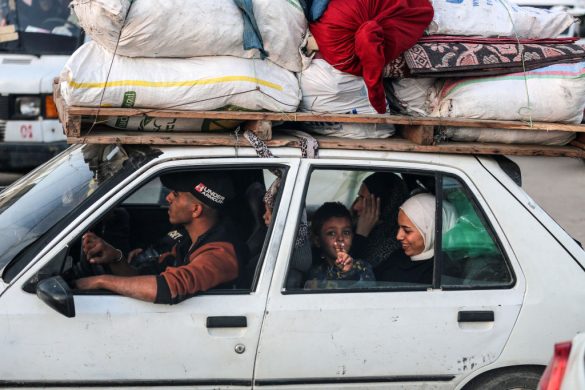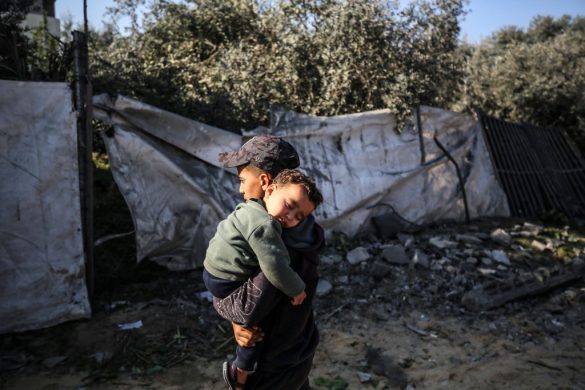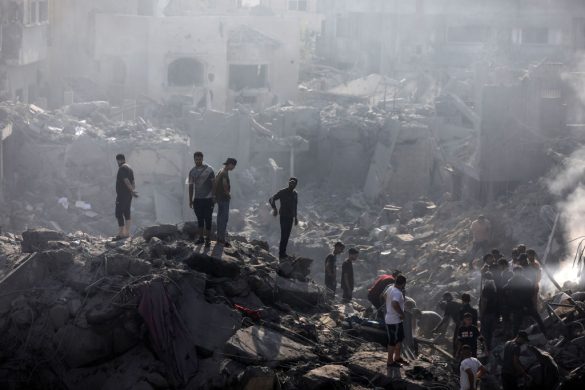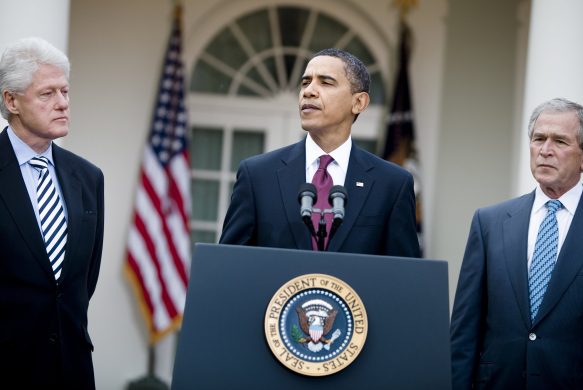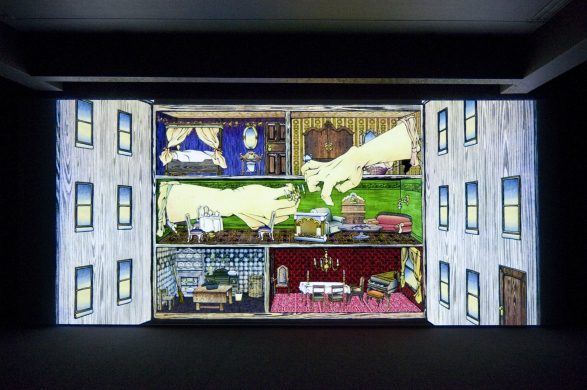Azraq-lejren i Jordans ørken skal tage imod nogle af de flygtninge, der fortsat strømmer ud fra Syrien. Anlægsarbejdet begyndte allerede i april, så det er muligvis den bedst planlagte flygtningelejr nogensinde og det vil kunne mærkes.
AZRAQ, 16 October 2013 (IRIN) – On a rocky patch of wind-swept desert 80km east of the Jordanian capital Amman, teams of construction engineers are hard at work erecting metal shelters.
Welcome to Azraq, soon to be the newest – and possibly the most planned – refugee camp in the world.
The 15sqkm site has been under construction since April, affording the UN Refugee Agency (UNHCR) – which is used to setting up camps in a matter of weeks rather than months – the rare luxury of time.
No one is quite sure when Azraq Camp will open, but already there are schools, playgrounds, child-friendly spaces, food warehouses, an arrival and registration area, health posts and a fully-equipped hospital.
Instead of tents, specially-designed metal-frame shelters are being arranged in small family clusters close to latrines and washing facilities.
Many see Azraq as an important opportunity for UN agencies to correct some of the mistakes made at the now notorious Za’atari Camp, which was opened in a rush last summer in the northeast of the country in order to respond to a sudden influx of Syrian refugees and is now home to some 120,000 people. It has struggled ever since due to overcrowding, poor sanitation, vandalism and crime.
“We had 10 days to establish Za’atari and we had one hand tied behind our back due to lack of funding,” explained Andrew Harper, UNHCR representative in Jordan. “We responded I think as well as we could, given that we had up to 3,000 people arriving a day…
“But with Azraq, we have had the opportunity to put in place the best practices that we know and that should have been put in place at Za’atari, had we had the time and resources to do so.”
A series of separate villages
The site on which Azraq is built was briefly used in the early 1990s as a resettlement camp for third country nationals fleeing Kuwait and Iraq during the First Gulf War. It was resurrected to accommodate an ever-growing number of Syrian refugees; UNHCR engineers used satellite images of the old camp to help them design the new facility.
Central to Azraq’s planning has been a focus on fostering communities within the camp to help refugees feel a sense of ownership over the facilities there.
Bernadette Castel, the senior UNHCR field coordinator for Azraq Camp, told IRIN: “I think the most important change is that the services are going to be decentralized from the beginning.
“What you had at Za’atari was that services were all in one place on one side of the camp… Here we are developing separate villages. So the idea is that the refugees in each village will have their own community services, like primary health posts and child-friendly spaces and that should reduce congestion.”
In addition to improving access to services, aid workers hope that people who feel more ownership of their facilities will be less likely to vandalize the playground next to their house, for example, or to steal from someone in their village if they are known by name by the community police officer.
With more personal service, people will be less anonymous and – the hope is – more willing to work together instead of against one another, both among themselves and with aid workers.
Each village – expected to house 8,000-15,000 people – will be separated into lots where there will be 12 separate shelters sharing two water, sanitation and hygiene (WASH) stations, one for men and one for women.
The plan is for families and people from the same areas in Syria to be housed together, with additional spaces left empty to accommodate relatives arriving later, where shelters or tents can be erected as required. Part of the reason the layout of Za’atari became so chaotic was that families moved their tents and caravans from their allotted spots to be closer to friends and family.
Aid workers believe bathrooms will be kept cleaner and more intact if they are more private and shared by families. Shorter distances to the latrines will also prevent the protection concerns that existed in Za’atari over women and girls having to travel long distances to access bathrooms, especially at night.
“We hope by grouping families together to share the WASH facilities, we can facilitate a sense of ownership and avoid some of the problems we saw in Za’atari associated with large numbers of people using communal latrines,” Castel said.
“A lot of this camp has been based on what refugees experienced in Za’atari themselves, so we are trying to take on those direct lessons,” she added.
Desert location
Læs hele artiklen: http://www.irinnews.org/report/98946/analysis-getting-it-right-for-syrian-refugees-the-second-time-round






